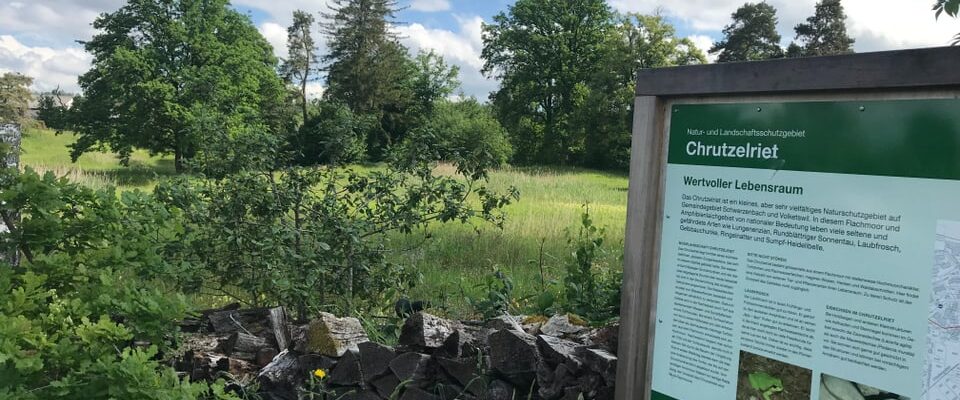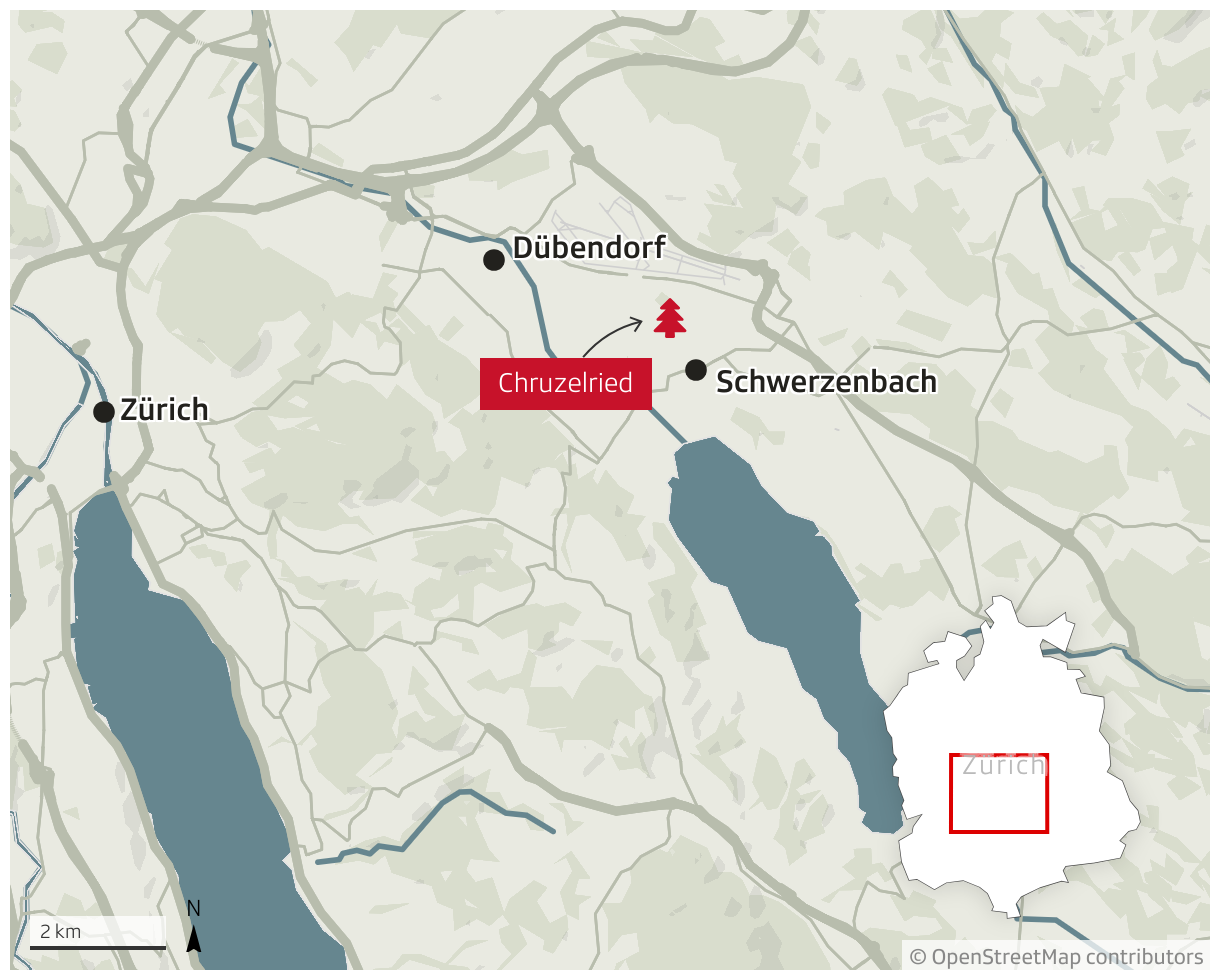Contents
International Biodiversity Day shows that protected areas alone are no guarantee of their preservation.
The state of biodiversity – that is, species diversity – is a concern for the population and politicians. Even in nature reserves, species diversity is threatened with decline if no measures are taken. A small nature reserve in the canton of Zurich is an example of the challenges.
Sandwiched between residential and agricultural zones
The Chrutzelriet, between Dübendorf and Schwerzenbach, is a fen and an amphibian spawning area of national importance. At the same time, it is also a small natural paradise, says Urs Tester, biologist and conservationist:
«When I take a walk here, I see something new every moment. I just saw a lizard scurry past. I hear the water frogs calling. I think that’s great. That’s biodiversity.”
Legend:
The entrance to the Chrutzelriet nature reserve in the canton of Zurich.
SRF
Tester is a member of the management board of Pro Natura Switzerland and has worked for the organization for over 30 years. He particularly likes the Chrutzelriet nature reserve because, on the one hand, it is an amphibian spawning area of national importance and, on the other hand, it is a fen in which rare plants thrive – such as the bright blue Siberian iris.
Despite all the enthusiasm, there is something that makes Urs Tester think: the protected moor area is only about the size of eight football pitches.
“When I talk to my colleagues in Germany and France and say that our nationally important area is 4.2 hectares in size, they laugh at me because in your case it is between ten and 50 times larger.”
This is indicative of the situation in this country, adds Andreas Wolf, managing director of the Economics and Ecology Foundation, which is responsible for the Chrutzelriet nature reserve.
«The nature reserves in Switzerland are relatively small and very isolated. This is because the traffic routes around it are growing more and more – more roads, more railway lines, but also the settlement is growing.”
Space is rare in little Switzerland
In the agricultural area – about 200 meters from Chrutzelriet – there is another, much smaller protected area. This presents concrete challenges:
“How do the amphibians get from one protected area to the other?” asks Andreas Wolf. “The landscape has been cleared. It has no structures, no hedge, no piles of branches, nothing. There is simply a lack of orientation for the amphibians and protection from predators.”

Legend:
Urs Tester, biologist and member of the Pro Natura management team.
Christin Flierl/Pro Natura
In the long term, the frogs and other amphibians can only survive if they can migrate and mate with other populations, the conservationists emphasize. That is why discussions are underway with the canton, municipality and agricultural representatives. A solution is being sought to better connect the areas, for example with bushes and hedges or piles of branches and stones.
Urs Tester, who will retire from Pro Natura at the end of the year, hopes that progress will soon be made in Chrutzelriet and elsewhere. “This is not just about individual animal and plant species. It is also about our livelihood and the future of our future generations.”

Legend:
The Chrutzelriet in the canton of Zurich is a fen area of national importance.
SRF
Because all living things, whether beetles, bumblebees or frogs, have an important function in the ecosystem. And because moors absorb CO₂ from the atmosphere, they make an important contribution to the fight against climate change.



